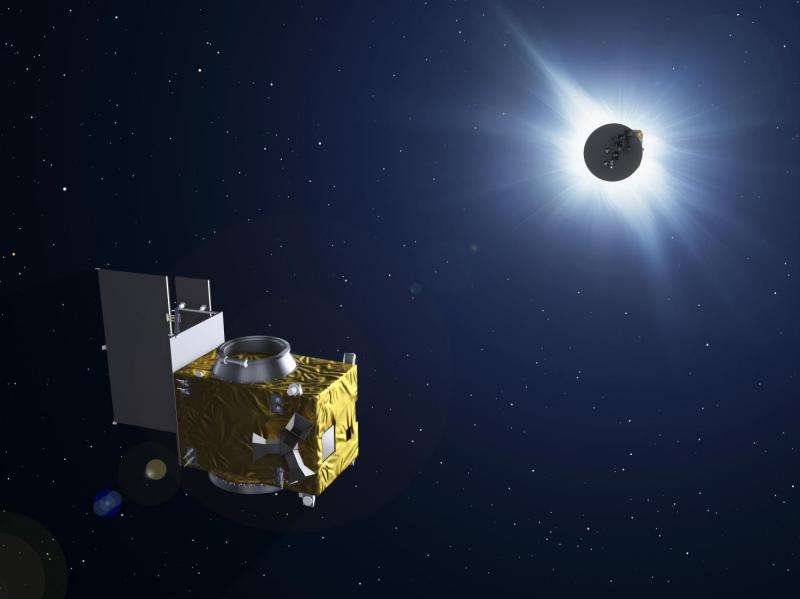Image: Far-out Proba-3

ESA's double-satellite Proba-3 mission will be flying where no previous member of the Proba minisatellite family has gone before – up to 60 000 km away, a seventh of the way to the Moon.
Set for launch in 2019, the two satellites will be launched together into a highly elliptical or elongated orbit, ranging from an perigee (low point) of 600 km up to an apogee (high point) of 60 000 km.
"This long 19.7 hour orbit will allow us to maintain sustained contact with the two satellites using a single ground station," explains Agnes Mestreau-Garreau, Proba-3 project manager.
"And around the high point of the orbit we will be able to spend around six hours on solar observation or devoted to experimental formation flying manoeuvres."
The latest member of ESA's experimental Proba minisatellite family, Proba-3's paired satellites will manoeuvre relative to each other with millimetre and fraction-of-a-degree precision, intended to serve as the virtual equivalent of a giant structure in space and so open up a whole new way of running space missions.
As has become traditional with Proba missions, the success of Proba-3's technology will be proven through acquiring high-quality scientific data. In this case, the smaller 'occulter' satellite will blot out the Sun's fiery disc as viewed by the larger 'coronagraph' satellite, revealing mysterious regions of our parent star's ghostly 'corona', or outer atmosphere.
When in Sun-observing mode, the two satellites will maintain formation exactly 150 m apart, lined up with the Sun so the occulter casts a shadow across the face of the coronagraph, blocking out solar glare to come closer to the Sun's fiery surface than ever before, other than during frustratingly brief terrestrial solar eclipses.
The challenge is in keeping the satellites safely controlled and correctly positioned relative to each other. This will be accomplished using various new technologies, including bespoke formation-flying software, relative GPS information, intersatellite radio links, startrackers, and optical visual sensors and optical metrologies for close-up manoeuvring.
Provided by European Space Agency





















